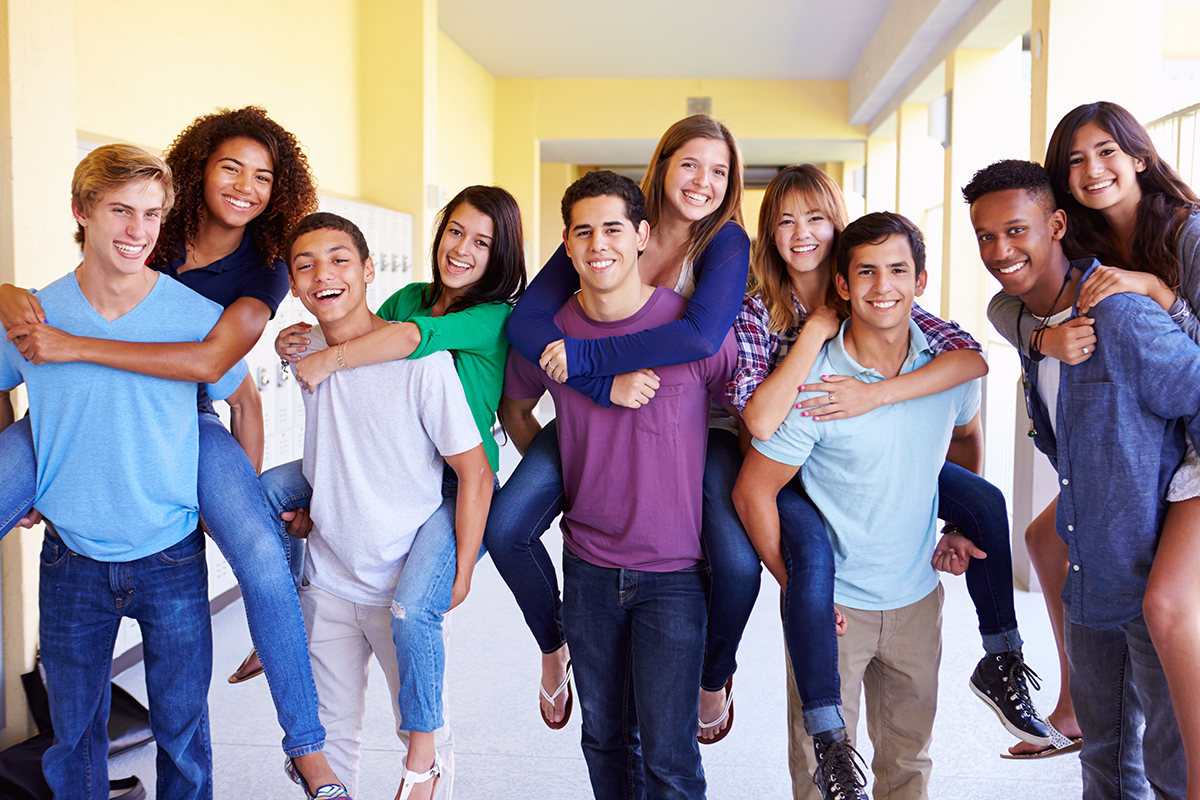Better Together Challenge Guide
This guide was developed by team members of the PROMISE Project in the T. Denny Sanford School of Social and Family Dynamics at Arizona State University.
Why Better Together?
The Better Together Challenge is based on the idea that good outcomes happen when the climate of a school is inclusive and relationships among students are respectful and positive. When students feel that they belong and have meaningful relationships at school, both the learning and social environments are enhanced. High-quality, inclusive school climates are beneficial for all students and are fostered through a shared vision of respect, engagement, and belongingness. The Better Together Challenge is designed to empower students and teachers to work together to produce positive changes in their own schools and classrooms so that all students can be successful in and out of school.
What is the Better Together Challenge?
The Better Together Challenge involves designing a plan to improve your school’s climate to be more inclusive and positive. For every school that shows interest, one team of students, led by a teacher from the school, will propose a plan. If that plan is selected, the school will be given funding to help implement the plan. The winning plan will receive a financial award and all the finalist plans will be highlighted on the website for other schools to use.
What to Consider in Joining the Better Together Challenge
- What changes should take place at your school to promote a more inclusive, fair, and safe school climate?
What gets in the way of your school community being kind and caring? When developing the plan, consider the things that prevent students from feeling connected to each other or the barriers that exist between groups of students. Think creatively about how you can break down barriers, show commonalities, and help students feel a sense of belonging. Consider how you might help students connect with others they don’t typically spend time or work with at school.
- How can you bring your ideas to life?
Groups of students are most capable of making meaningful change. With the help of a teacher as a mentor and guide, and the permission and awareness of the principal, students will be supported as they put their ideas into action. Student dedication is key, but it is also important for the teacher to be involved to ensure that the project is manageable and safe. A teacher can also help students work with administrators to sustain the project over time or get accomplished even more.
- How can you effectively implement your ideas?
Depending on what you plan to do, some projects may take more time and planning than others. Creating a timeline will help ensure that there is enough time to implement your project and see it through before the school year ends. What needs to happen and when? Is there an event or assembly that needs to be scheduled? Are supplies needed? How will you document the project’s progress?
Frequently Asked Questions
- Are we eligible?
For this challenge, you must meet the following requirements:- Must be from a public middle, junior or high school located in Maricopa County
- Must have at least one teacher as an advisor
- Must have signed permission from your principal
- Only one team per school is eligible
- Must involve a group of three or more students
- What is the deadline for applying?
- Notification of intent must be submitted by midnight on September 6, 2019 and final proposal applications must be submitted by midnight on September 27, 2019
- Notifications of intent and applications must be submitted online via the Better Together Challenge website: https://thesanfordschool.asu.edu/better-together
- What is the role of the teacher advisor?
Teacher advisors will be responsible for mentoring and guiding the students as they decide on solutions that promote inclusion and belongingness in their schools. Teachers will also support students as they complete their project proposal. Each team selected as finalists will also receive a teacher stipend of $500. (stipend divided equally if more than one teacher advisor).
- When are the finalists selected?
Up to 5 "finalists" teams will be selected in the middle/junior category and 5 "finalists" teams will be selected in the high school category. Finalists will be notified no later than the second week of October.
- What budget will the finalist teams have to work with?
All 10-finalist teams will receive up to $300 to implement their project. Separate challenges will be set up for middle/junior and senior high schools.
- What does the winning team and school receive?
- Near the end of the school year, the finalists will present their reports to the Better Together Challenge Review Panel. The panel will select one school from middle/junior category and one school from high school category as the Better Together Challenge Winner to receive a financial prize, plus additional funds to sustain the project into the following year.
- All finalists will be recognized publicly as a model of inclusion and positive school climates.
- How do I measure the success of our ideas?
- Think carefully about how to assess the impact of your project.
- Who should be involved in this (students, teachers, administration)?
- What tools can you use to understand the impact (holding discussion groups, survey classes, conduct observations)?
- Consider the time it will take to do these assessments.
- How will you summarize this information?
- Note: Your advisor should be involved in helping making these decisions.
- We have an idea and are ready to submit a proposal, what do we do?
- Terrific. Submit your notification of intent and applications here: https://thesanfordschool.asu.edu/better-together
- We are thrilled and excited to read what you have come up with.
